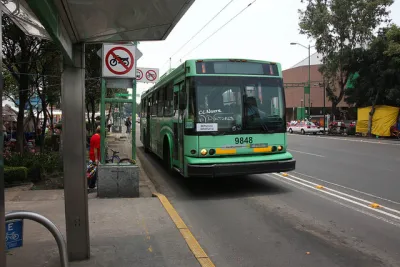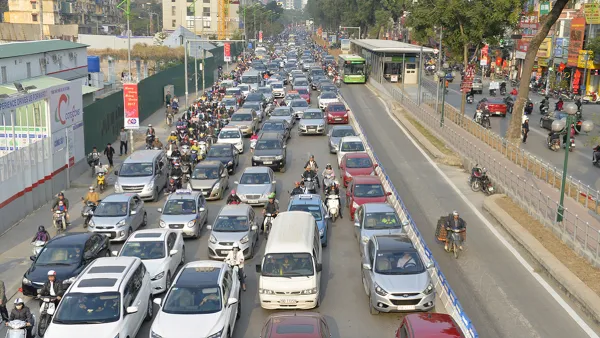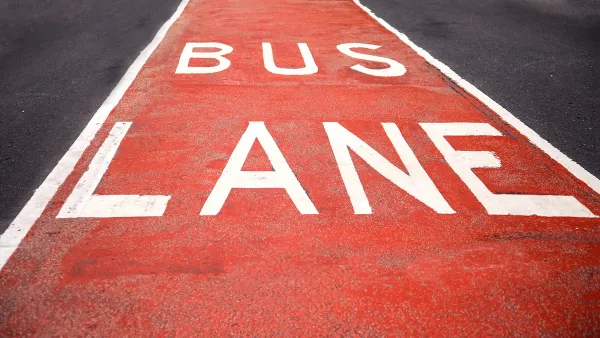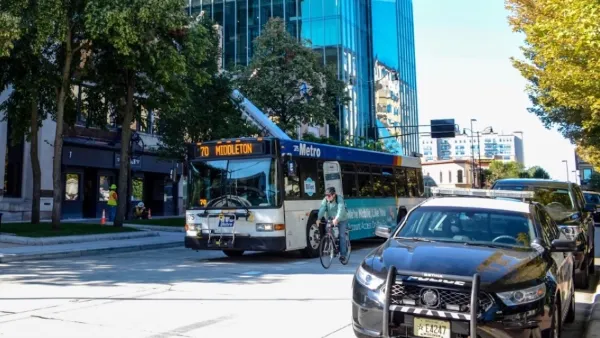The curious and, at times, dangerous design of bus lanes that move against the flow of traffic in Mexico city will be expensive and time-consuming to take out, so the city looks for ways to work with what it has.

Mexico City's buses sometimes drive in their own lanes in the opposite direction of traffic on one-way streets. The design was created in the '70s when the city was looking for ways to increase the throughput of private vehicles. The one-ways allow for wider lanes and higher speeds, and accommodate bus travelers who would have to walk to more distant one-way streets to catch a bus.
So the city built bus-only lanes for buses to go in the opposite direction of traffic. A problem with this design is that drivers sometimes do not recognize the uncommon design and pull into the lane of the oncoming bus. "World Resources Institute, a research organization that found a 146 percent increase in pedestrian crashes and a 35 percent increase in vehicle collisions in counterflow lanes," Natalie Schachar reports in CityLab. Unfortunately, updating these streets would cost $6 million per kilometer. "For now, the next best solution appears to be optimizing bus corridors by installing better signaling, mid-block crossings, and physical barriers to prevent vehicles and pedestrians from straying into the wrong lane," Natalie Schachar writes.
FULL STORY: Why Mexico City Has Counterflow Bus Lanes

National Parks Layoffs Will Cause Communities to Lose Billions
Thousands of essential park workers were laid off this week, just before the busy spring break season.

Retro-silient?: America’s First “Eco-burb,” The Woodlands Turns 50
A master-planned community north of Houston offers lessons on green infrastructure and resilient design, but falls short of its founder’s lofty affordability and walkability goals.

Delivering for America Plan Will Downgrade Mail Service in at Least 49.5 Percent of Zip Codes
Republican and Democrat lawmakers criticize the plan for its disproportionate negative impact on rural communities.

Test News Post 1
This is a summary

Test News Headline 46
Test for the image on the front page.

Balancing Bombs and Butterflies: How the National Guard Protects a Rare Species
The National Guard at Fort Indiantown Gap uses GIS technology and land management strategies to balance military training with conservation efforts, ensuring the survival of the rare eastern regal fritillary butterfly.
Urban Design for Planners 1: Software Tools
This six-course series explores essential urban design concepts using open source software and equips planners with the tools they need to participate fully in the urban design process.
Planning for Universal Design
Learn the tools for implementing Universal Design in planning regulations.
EMC Planning Group, Inc.
Planetizen
Planetizen
Mpact (formerly Rail~Volution)
Great Falls Development Authority, Inc.
HUDs Office of Policy Development and Research
NYU Wagner Graduate School of Public Service





























